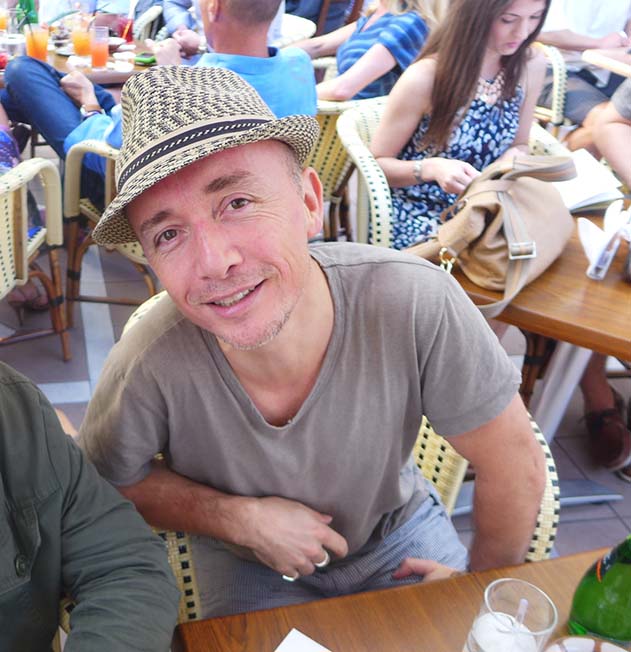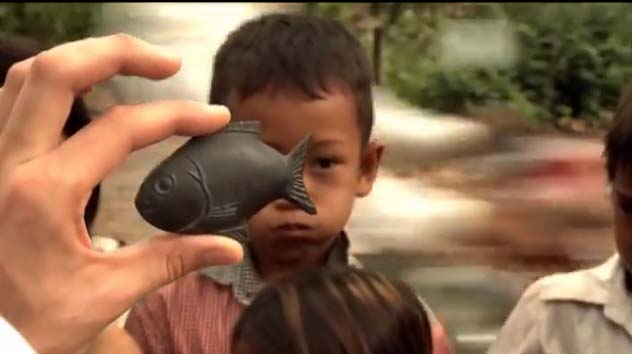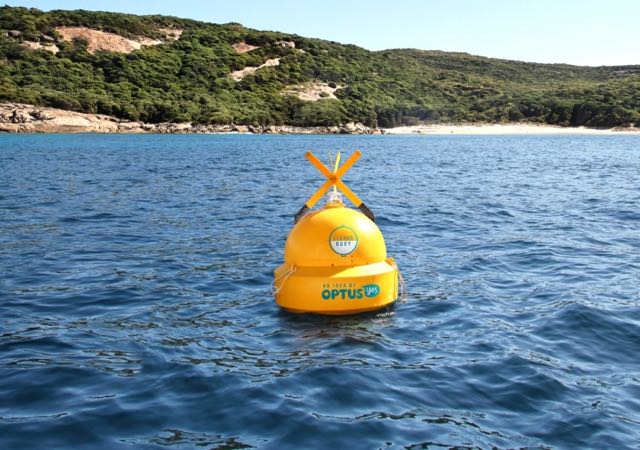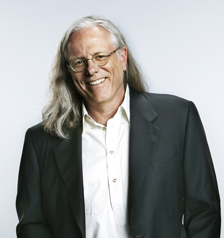Ant Keogh on Cannes Scam: The Jury is Out
 CB Exclusive – By Ant Keogh, executive creative director of Clemenger BBDO, Melbourne
CB Exclusive – By Ant Keogh, executive creative director of Clemenger BBDO, Melbourne
This year I was honoured to be part of the Titanium & Integrated jury at Cannes. Before I left Australia, I had began to hear a narrative creeping into conversation, on and offline, about scam work being okay; that scam is the equivalent of the ‘concept car’ at a car show. Coming from an agency which, in the past, has tended to win awards for large, visible campaigns, even we were feeling the pressure. How do we possibly compete when so many agencies are taking the easy path?
So it was refreshing to meet the Titanium jury to find the chairman, Mark Fitzloff from Weiden & Kennedy, was vehemently against scam and determined that we weed it out. This was echoed loudly amongst most of the jury. We vowed to make sure that, at the very least, the very highest awards went to work that was real.
That goal might sound a little half-arsed but that’s because the task is so difficult. You’re working in a fog, rapidly processing hundreds of case studies, all presenting a narrative full of, at best, hyperbole; at worst, outright lies.
A fair bit of our time was – depending on how you look at it – well spent or wasted pursuing this goal; doing detective work, looking on the net for proof of legitimacy around work. It’s important to understand it wasn’t a witch-hunt and it wasn’t motivated by politics. In all but the most blatant scams, we hoped the suspicious work was real. Because we all love good ideas and much of this work was, in a pure idea-sense, great.
Sometimes we said, ‘Well that at least seems to meet the bare minimum of being real’. It was usually a fine line. Mostly we didn’t kick stuff out, outright, because you can never be totally sure. It was imprecise but all I can say is the decisions were made in good faith. I’ve never been on a jury that seemed less political.
Some high profile work, some work I loved, was left at finalist level or kicked off the list altogether. If you see something on our finalist list which won Gold at other shows, or other categories, it’s probably (but not always) a sign the jury thought it was suspicious. In fact we were scratching our heads at some other juries when they seemed to award projects that were clearly bogus. But I’m also sympathetic because I’ve been on previous juries with thousands of pieces of work and not enough time to properly scrutinise them. The Titanium jury had a little more time to dig. Undoubtedly we made some mistakes. I guarantee you will be able to pick apart the jobs we awarded. I didn’t always agree myself (but, hey, I was just one vote) but every jury makes mistakes.
Apart from the obvious, there were a number of more subtle problem areas:
 Firstly the ‘inventions’ or new tech that turned out to be invented by someone other than the agency. If all you did was repackage or promote a great idea, that’s okay, but don’t enter a Titanium, Product Design or Innovation category. Or at the very least make sure the actual creator of the ‘clever bit’ is front and centre of the credits.
Firstly the ‘inventions’ or new tech that turned out to be invented by someone other than the agency. If all you did was repackage or promote a great idea, that’s okay, but don’t enter a Titanium, Product Design or Innovation category. Or at the very least make sure the actual creator of the ‘clever bit’ is front and centre of the credits.
Secondly, the jobs that were already awarded the previous year but in different categories. Officially it’s allowed but I could see it didn’t go down well with some of the judges.
 Then there was the vexed area of ‘Prototypes’. When it comes to techy work, prototyping is a necessary part of the process. It’s ‘how you do it’. But obviously agencies and clients are taking advantage of that. They like the P.R. without the risk. And sometimes that makes sense (something I’ll get to in a minute). We had two prototypes near the top of our list, the Samsung Safety Truck and Optus Clever Buoy. Both met resistance by some members of the jury.
Then there was the vexed area of ‘Prototypes’. When it comes to techy work, prototyping is a necessary part of the process. It’s ‘how you do it’. But obviously agencies and clients are taking advantage of that. They like the P.R. without the risk. And sometimes that makes sense (something I’ll get to in a minute). We had two prototypes near the top of our list, the Samsung Safety Truck and Optus Clever Buoy. Both met resistance by some members of the jury.
In the case of Samsung at least there was a working model out there. You could see how in the future it could be the way it’s done. With Clever Buoy, we were assured by the agency that they are rolling it out in the near future. It will be interesting to see if they are true to their word. Many other ‘prototypes’ fell by the wayside.
But I think there is a legitimate use of prototypes: this is prototype-as-publicity-stunt. With this approach, if the publicity stunt lands, it equates to real money for the client, through earned media. Take ‘Funderwear’ from a couple of years back as an example. In this case they only made one pair of underwear. It was expensive. But it wasn’t intended for a ‘real’ audience to use. It was created to cause a stir. A publicity stunt in the old fashioned sense. And it garnered thousands of dollars worth of free media. What I’m worried about is all the other ‘publicity stunts’ that didn’t garner much of an audience beyond the ad industry, or worse still, award juries.
So where are we headed?
 I think this year I noticed the start of a backlash against scam work. High profile creative leaders such as David Trott and Jeff Goodby (left) made their positions clear. I wonder if the outdoor Grand Prix, Apple’s ‘This was shot on an iPhone 6’ campaign, was also a vote against scam. I heard people categorise this choice as dull, but I could imagine, as a judge, that the outdoor jury, faced with a wall full of dubious work, chose the high profile business-changing real work for a big brand.
I think this year I noticed the start of a backlash against scam work. High profile creative leaders such as David Trott and Jeff Goodby (left) made their positions clear. I wonder if the outdoor Grand Prix, Apple’s ‘This was shot on an iPhone 6’ campaign, was also a vote against scam. I heard people categorise this choice as dull, but I could imagine, as a judge, that the outdoor jury, faced with a wall full of dubious work, chose the high profile business-changing real work for a big brand.
But, equally, there’s evidence this year, as always, that scam work is paying off for agencies. The truth is some networks, some agencies and some countries are ‘better’ at scam. If your jury president comes from one of these cultures it stands to reason scam is going to slide through more easily.
In the rules of Cannes, it clearly instructs the jury not to award work that is ‘made for the sole purpose of winning awards’. But unless juries get vigilant, that ideal isn’t going to take hold. For that to happen the industry has to agree that scam is making us look irrelevant, self indulgent and a bit pathetic.
I’m not sure everyone agrees.

18 Comments
If a prototype piece is created for the sole purpose of being a publicity stunt, should it win in an innovation or Titanium category? Or should it be winning in PR?
Cool article, cheers.
Agreed, but isn’t Titanium part of Integrated? In which case it would be an idea that works across multiple mediums, including PR?
And to win in innovation, how many does one need to produce?
This needs to be ironed out or put to a vote for all award shows.
@Taxonimist
RE Titanium = integrated.
No, it’s confusing, but actually they are two separate categories and there was a Grand Prix for each. When you enter you are asked which group you think the entry falls into (but that can be ignored by the jury).
At a certain point we separated them into the two groups, Titanium or Integrated.
But for some reason they don’t make that distinction on the finalist list.
I’m pretty sure next year they will be two categories.
Spot on! It’s no wonder he’s the best.
A prototype idea is awarded with a prototype statue.
I think we are forgetting what it is we actually do.
I saw so many great case studies at Cannes that were awarded because they were great ideas – regardless of whether or not they provided results.
At the end of the day we are sales people, we sell things. do these? does it matter? why or why not?
Advertising is a state of flux and I can’t wait to see what happens.
Great article Ant! Nice to get some insights into the judging process
But isn’t Clever Buoy exactly the same as a concept car?
There is one of them, and it only detects sharks up to 15 metres… which means it would be great for any beaches of less than 30m in length…
Innovation is 90% execution whether it be a film or a robot or a whatever. The process is what should awarded — the mistakes, the dead ends and the triumph etc…
An innovative idea is just an idea without the execution. You should have actually gone through the process to be awarded for innovation.
So the winner of this year’s Australian Institute of Architects Awards goes to a model of a potential new building. Good luck with that one.
@er
There’s a suggestion above that the Buoy will be made real.
Dolmio Pepper Hacker anyone?
http://www.campaignbrief.com/2015/03/dolmio-reclaims-family-dinnert.html
That often happens to be honest
So Ant, even by your own definitions, your jury shouldn’t have awarded Buoy – you were swayed by a promise that it would be real one day. That’s horsecrap.
@V Disappointed.
Well I would say Buoy falls into the grey area I described above.
It earned a lot of free media with the public (as well as the ad industry) plus we were told it was rolling out soon. In that sense it seems comparable to the Samsung Truck in terms of ‘realness’. I suggest you look at the award video and see it’s ambiguous in terms of scale.
I like the idea a lot and, in the moment – armed with not a lot of facts – gave it the benefit of the doubt.
Perhaps you know more about this particular job than I do…
AK.
I absolutely agree with V Disappointed. I thought exactly the same thing as I read the article. I think it’s a great article, by the way. The writer himself sounds less than confident Buoy will definitely be rolled out.
An excellent piece by a scion of the industry.
The final sentence is the killer -“For that to happen the industry has to agree that scam is making us look irrelevant, self indulgent and a bit pathetic.”
Just how pathetic are we?
I just wanted to say, without gushing at all…
Ant was around (not sure if he was across) Magic Salad plate. Then there was Support Scent. Boony Doll might have been in there somewhere. And I’m sure there’s a bunch of other things that were a heck of a lot less scammy than these ‘innovations’, plus he did them nearly ten years before there was a category.
Sorry, I just wanted to say Ant – you’ve done it well. We’ve all tried to get our ideas to happen on a large scale, including some prototypes you’ve mentioned. But you were doing it well before us, and I think that deserves a round of applause.
Ok, wipe me down, I’m done, but it is worth mentioning.